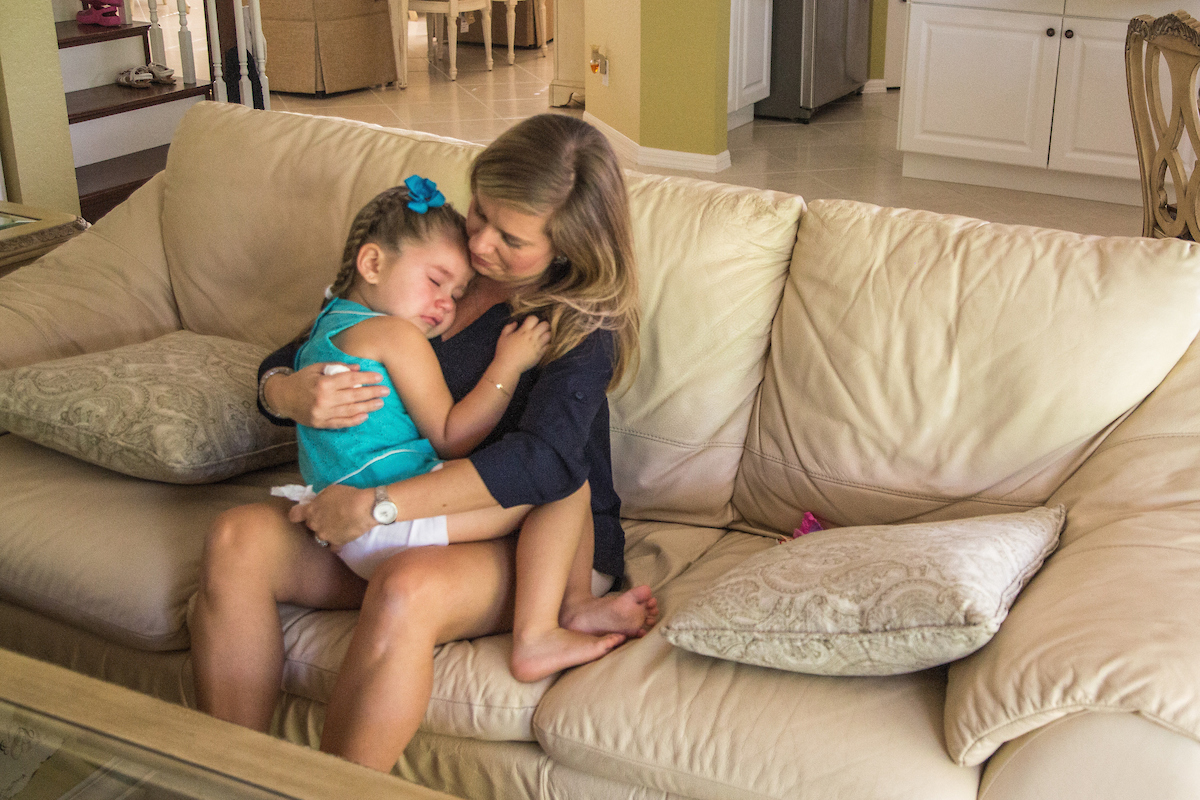- Behavior
- Health
- Parenting
How to deal with my toddler’s tantrums

Ever dread going to the grocery store or doctor's office with your toddler? You're not alone.
“Children have tantrums as a way to gain control, to get what they want,” says Dr. T. Berry Brazelton, the late renowned pediatrician. “All children go through this at least once, but it can actually be curbed quite well after that initial tantrum.”
Ann C. Stadtler, a nurse who worked with Dr. Brazelton, explains.
“The first time a toddler gets overpowered or doesn’t get their way, he may react by having a tantrum. Initially, he may not notice the reaction because he is overpowered, but then he does notice how his parent reacts. But as he learns to control his strong emotions, he can also control his tantrums. Children become very competent at regulating their tempers. They learn how, when and where they are able to turn a tantrum on and off,” Stadtler says.
Once you understand what might set off your child, you can better respond the next time tempers flare.
“If the child is having a tantrum in the grocery store, for example, use a positive model to calm him down," Dr. Brazelton says. "Hug him and say, ‘I know it’s so hard to come here and not want to take home candy,’ or cookies or whatever it is he’s crying for. Calm him down that way. And he’ll likely stop crying and think about it, and talk it out a bit.”
SOURCES:
• Dr. T. Berry Brazelton, founder, Brazelton Touchpoints Center
• Ann C. Stadtler, founding faculty member, Brazelton Touchpoints Center
You May Also Like
-
- Health
- Parenting
- Safety
How to handle car seats with relatives and mass transit
This Q & A may help if you're wondering what rules to enforce when others are traveling with your child and if you should bring car seats or boosters on airplanes and other public …
Read More -
- Education
- Health
- Parenting
Jump-start your toddler's vocabulary through reading
Did you know children memorize words by their sounds even before they start reading? See more reasons why it's so important to read to your children and teach them words everywhere …
Read More -
- Behavior
- Education
- Health
By age 3, your little one’s brain will be 80 percent of its adult size!
The earlier developmental delays are identified and addressed, the better the outcome for the child will be. Read on for insight about key markers from our experts and how to reach …
Read More
Related resources
-
- Behavior
- Education
- Health
211 Palm Beach Treasure Coast
Help Me Grow – information, guidance and developmental assessment of children up to age 8
2-1-1 Website Email -
- Behavior
- Parenting
Community Partners
Positive Parenting Program, known as Triple P — free seminars and one-on-one guidance to help families improve their parent-child relationships
561-841-3500 Website Email -
- Behavior
- Parenting
Center for Family Services of Palm Beach County
Positive Parenting Program, known as Triple P, offers free seminars and one-on-one guidance to help families improve the parent-child relationship
561-616-1222 Website Email -
- Other
- Safety
HomeSafe
Based in Lake Worth Beach, crisis intervention, planning, assessment, support, resources and therapy for victims of domestic violence and their children
561-383-9800 Website Email -
- Education
- Parenting
- Things to do
BRIDGES of Palm Beach County
Ten neighborhood hubs help parents raise children healthy, safe and strong
561-740-7017 Website
